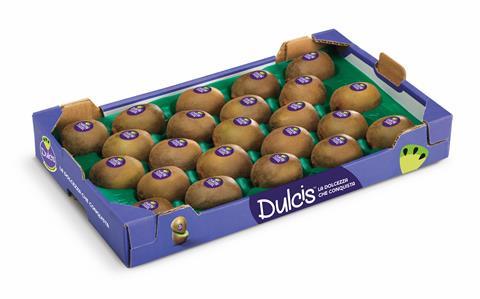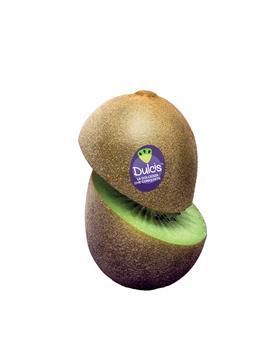Three of the country’s leading kiwifruit marketers have put their faith in a new homegrown, green variety with golden origins

When is a green kiwifruit not a green kiwifruit? When its origins are firmly rooted in the branch of the family tree that belongs to golden varieties known to horticulturalists as Actinidia chinensis. And when, as a result, that product combines a green kiwifruit’s typical acidity with the kind of aroma, taste and enhanced sweetness that are typically associated with a yellow-fleshed type.
That, in a nutshell, is the unique selling point of Dulcis, a brand new variety developed by Romagna-based consortium New Plant in partnership with the University of Bologna and the University of Udine.
Much of the excitement, it seems, stems from the fact that Dulcis is a product developed entirely in Italy, and one that promises to restore some commercial spark to sales of the country’s most prevalent green variety, Hayward. It took 15 years to emerge as a bona fide prospect, so no wonder its marketers want to make up for lost time.
The variety is managed exclusively by New Plant, which has then sub-licensed its production and marketing to members Alegra, Apofruit Italia, and Orogel Fresco. “As happens with all high-quality products, with Dulcis, growers have to adopt good practices and take good care in order to reach the variety’s high standard and deliver a fruit worthy of the brand,” explains New Plant director Mirco Montefiori. “To do that, we work with high skilled growers and packhouses.”

With that reliable supply chain in place, the challenge now is to get people tasting it in stores. “We will aim for the premium segment,” Montefiori adds. “We need to communicate and explain to people how it is different.”
Dulcis’ official launch as a commercial brand came at the start of Italy’s new kiwifruit season in the autumn. Initially, the marketing effort is focused on Italy, Germany and Belgium as volumes grow. But as soon as the following season, New Plant’s members expect to have established around 500ha of production across much of the Italian peninsula, in Emilia-Romagna, Lazio, Veneto, Friuli- Venezia Giulia, Basilicata and Calabria.



